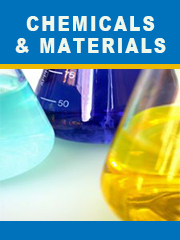Report overview
Silicone textile softener is a kind of textile auxiliaries, which is sourced from silicone polymers. It can adsorb in the textile fiber surface and make it smooth to change hand feeling.
There are many kinds of products in the market for silicone textile softener. Currently, multiple block silicone textile softener and amino silicone textile softener are the main types.
In the report, we convert the products of different contents into 100% and calculate it.
Note: The manufacturers in the report just include companies who produce crude oil, not including companies who just buy crude oil from manufacturers and compounded it.
This report aims to provide a comprehensive presentation of the global market for Silicone Textile Softeners, with both quantitative and qualitative analysis, to help readers develop business/growth strategies, assess the market competitive situation, analyze their position in the current marketplace, and make informed business decisions regarding Silicone Textile Softeners. This report contains market size and forecasts of Silicone Textile Softeners in global, including the following market information:
Global Silicone Textile Softeners Market Revenue, 2018-2023, 2024-2029, ($ millions)
Global Silicone Textile Softeners Market Sales, 2018-2023, 2024-2029, (MT)
Global top five Silicone Textile Softeners companies in 2022 (%)
The global Silicone Textile Softeners market was valued at US$ 321 million in 2022 and is projected to reach US$ 316.8 million by 2029, at a CAGR of -0.2% during the forecast period. The influence of COVID-19 and the Russia-Ukraine War were considered while estimating market sizes.
Global Silicone Textile Softeners key players include Dow Corning, Wacker, Momentive, Dymatic, ShinEtsu, etc. Global top five manufacturers hold a share nearly 25%.
China is the largest market, with a share about 50%, followed by USA, and Europe, both have a share over 30 percent.
In terms of product, Multiple Block is the largest segment, with a share over 45%, followed by Amino Silicone, etc.
We surveyed the Silicone Textile Softeners manufacturers, suppliers, distributors and industry experts on this industry, involving the sales, revenue, demand, price change, product type, recent development and plan, industry trends, drivers, challenges, obstacles, and potential risks.
Total Market by Segment:
Global Silicone Textile Softeners Market, by Type, 2018-2023, 2024-2029 ($ Millions) & (MT)
Global Silicone Textile Softeners Market Segment Percentages, by Type, 2022 (%)
Multiple Block Textile Softeners
Amino Textile Softeners
Others
Global Silicone Textile Softeners Market, by Application, 2018-2023, 2024-2029 ($ Millions) & (MT)
Global Silicone Textile Softeners Market Segment Percentages, by Application, 2022 (%)
In Fabric Finishing
Others
Global Silicone Textile Softeners Market, By Region and Country, 2018-2023, 2024-2029 ($ Millions) & (MT)
Global Silicone Textile Softeners Market Segment Percentages, By Region and Country, 2022 (%)
North America
US
Canada
Mexico
Europe
Germany
France
U.K.
Italy
Russia
Nordic Countries
Benelux
Rest of Europe
Asia
China
Japan
South Korea
Southeast Asia
India
Rest of Asia
South America
Brazil
Argentina
Rest of South America
Middle East & Africa
Turkey
Israel
Saudi Arabia
UAE
Rest of Middle East & Africa
Competitor Analysis
The report also provides analysis of leading market participants including:
Key companies Silicone Textile Softeners revenues in global market, 2018-2023 (Estimated), ($ millions)
Key companies Silicone Textile Softeners revenues share in global market, 2022 (%)
Key companies Silicone Textile Softeners sales in global market, 2018-2023 (Estimated), (MT)
Key companies Silicone Textile Softeners sales share in global market, 2022 (%)
Further, the report presents profiles of competitors in the market, key players include:
Wacker
Momentive
ShinEtsu
Piedmont Chemical Industries
CHT/BEZEMA
Nicca
Fineotex
Americos Nanosoft
Dow Corning
Dymatic
Yincheng
Transfar
Chuyijia
Huihong
Tianyuan
Kelin
Bengbu Xicheng Organic Silicon
Skycentchem
Chuangyue
Blue Star
Dayi
Jiuling
Green Enterorise
Yizhou
Runhe
Honest
Xike
Huancheng
Zhentong
Diri
United Chemical&Textile
Hanfeng
United Chem
Kanon
Longcheng Chemical
Goon
Daxin
Tianding
Feifa
Chengyou
Chenhua
Chengda
Jinchang
Trippon
Jlsun High-tech
Huatong
Shengbang
Tianyuan
Siltech
Jinhong
Outline of Major Chapters:
Chapter 1: Introduces the definition of Silicone Textile Softeners, market overview.
Chapter 2: Global Silicone Textile Softeners market size in revenue and volume.
Chapter 3: Detailed analysis of Silicone Textile Softeners manufacturers competitive landscape, price, sales and revenue market share, latest development plan, merger, and acquisition information, etc.
Chapter 4: Provides the analysis of various market segments by type, covering the market size and development potential of each market segment, to help readers find the blue ocean market in different market segments.
Chapter 5: Provides the analysis of various market segments by application, covering the market size and development potential of each market segment, to help readers find the blue ocean market in different downstream markets.
Chapter 6: Sales of Silicone Textile Softeners in regional level and country level. It provides a quantitative analysis of the market size and development potential of each region and its main countries and introduces the market development, future development prospects, market space of each country in the world.
Chapter 7: Provides profiles of key players, introducing the basic situation of the main companies in the market in detail, including product sales, revenue, price, gross margin, product introduction, recent development, etc.
Chapter 8: Global Silicone Textile Softeners capacity by region & country.
Chapter 9: Introduces the market dynamics, latest developments of the market, the driving factors and restrictive factors of the market, the challenges and risks faced by manufacturers in the industry, and the analysis of relevant policies in the industry.
Chapter 10: Analysis of industrial chain, including the upstream and downstream of the industry.
Chapter 11: The main points and conclusions of the report.
